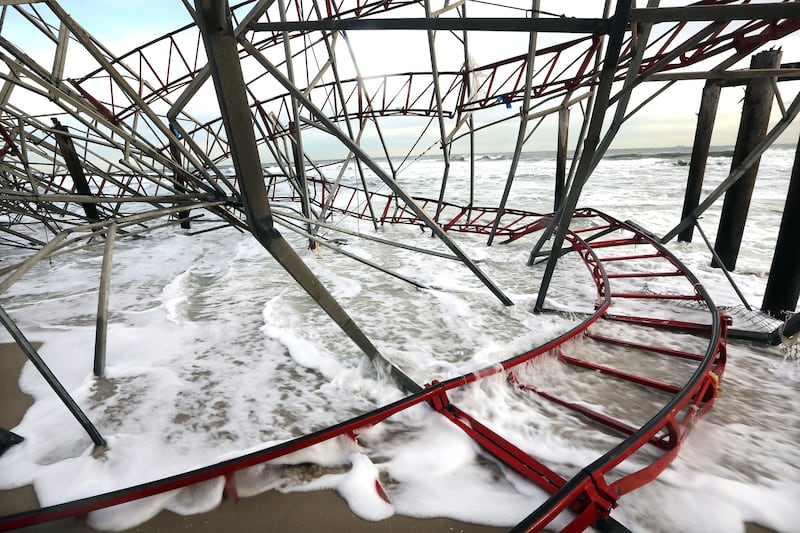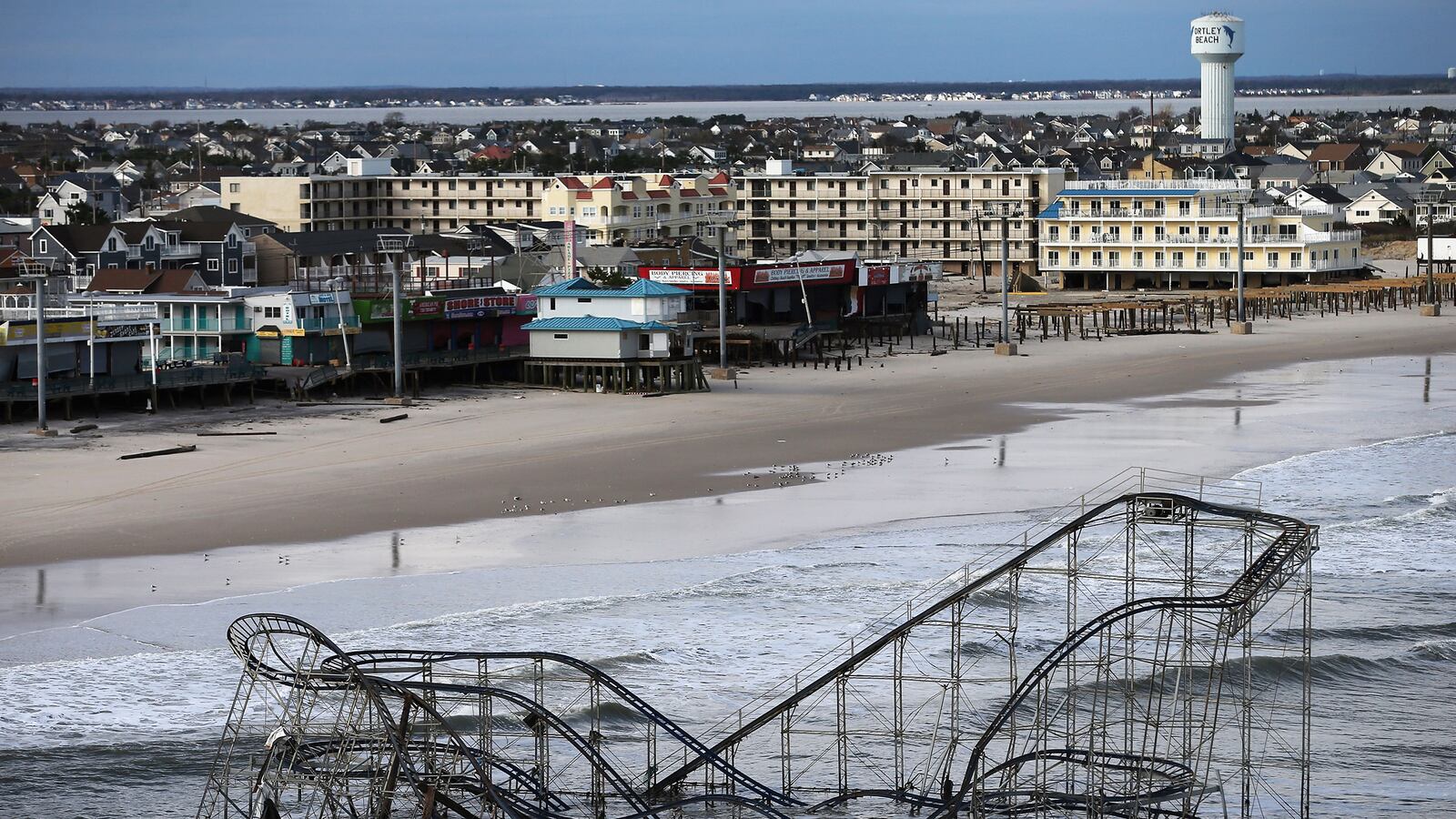Alas, the town of Seaside Heights, N.J., will not get to leave its roller coaster in the ocean.

Last week, Seaside Heights Mayor Bill Akers told a TV crew that the partially submerged Jet Star roller coaster, swept off a pier by Hurricane Sandy, would make a “great tourist attraction.” Now he’s recanted, saying that his previous statement “was not the brightest comment.”
And we were just beginning to like the guy.
“If it was going to stay,” the mayor says, channeling his inner sensible-guy, “there are issues.” Would the state Department of Environmental Protection allow it? Or does the decision rest with the Coast Guard? Or the insurance companies? “The whole situation is unfortunate,” says the mayor, who was plainly hurt after “everyone all over on Facebook… took a shot at me.”
Cowboy up, Mayor. This could be a legacy-burnishing moment.
There are, of course, plenty of reasons to dismantle the roller coaster. Left in place, it might pose a hazard to swimmers, surfers, boats, and every lunatic who decided that the rickety ruin would be fun to climb. And who knows how structurally sound it is now, or when part of it might collapse, causing further damage. The owners might as well hang out a “So Sue Me” sign.
All that notwithstanding, when did practicality have much leverage on a boardwalk? We’re talking, after all, about a 1,300-foot-long roller coaster rising 52 feet in the air, a ride that was built on top of a pier jutting out into the surf. And now people want to get all sensible?
Sure, some people probably want the roller coaster to go away because it reminds them of the devastation. If you lost your house or your business or, worse yet, some part of your family to Sandy, the last thing in the world you want to have staring you in the face is some pathetic symbol of devastation.
Or maybe you do want such a symbol. People are funny.
And really, what’s more troubling, the sight of a ruin—a physical reminder of what Mother Nature can do—or the mentality that says rebuild as fast as we can and pretend that none of this ever happened?
To be fair, when people like Mayor Akers talk about rebuilding Seaside Heights, they are usually careful to say not only rebuild but “better than it was.” But to do that, you would probably not put a roller coaster on the end of a pier. Not a second time, at any rate.
You would also not build back on a barrier island, because barrier islands are really nothing but big sand bars that are always moving. That’s why seaside beaches need “nourishing,” at a cost of millions of dollars. But no one is talking about such things. The people of Seaside Heights just want their town back pretty much the way it was. Who can blame them?
Somewhere in all this, though, shouldn’t we learn as much as we can from the awfulness that was Sandy?
In “Ozymandias,” the poet Percy Shelley conjures the statue of a king. The base of the statue bears the inscription, “Look on my works, ye Mighty, and despair!” The irony is that the statue is a broken ruin, with the legs poking up here, the head lying over there, while “Round the decay / Of that colossal wreck, boundless and bare / The lone and level sands stretch far away.” Change level sands to lashing surf, and we’re bringing it all back home.
Think of the Jet Star as our Ozymandias, a stark reminder of what happens when you mix the folly of a roller coaster built on the end of a pier with 100 mph winds. So why not leave it where it is, especially if you build back and build better than ever? The Jet Star will always be there as a benchmark, a living reminder of how bad it got, and how far back people had to fight just to reclaim what they thought of as normal life.
But the beauty of the thing, the sheer downright poetry, is how crazy that roller coaster looks out there in the middle of the surf. No one has to wonder why photographs of that sight instantly became shorthand for all that Sandy did—the outrageousness of it all, the upside-downess, the horror and the comedy all balled together and finally the indomitability of people and places that just would not say, “uncle” but kept rising back up. Somehow the image of that doomed roller coaster still rising above the waves testified to all of that.
It seems a shame to lose it now.





